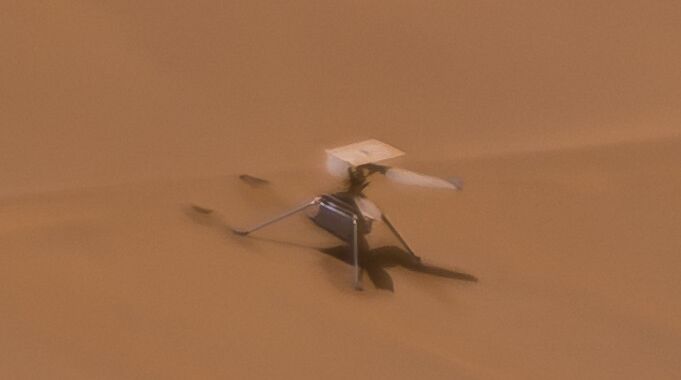Ingenuity has been the first aerial vehicle on another world. NASA announced the end of the Martian helicopter’s life at the end of its 72nd flight. During the flight there had been a problem on landing and, following the incident a few photos revealed chips in one of the rotor blades but nothing too serious. New images have been revealed that show the craft is missing one of its rotor blades entirely!
Continue reading “Ingenuity Won’t Fly Again Because It’s Missing a Rotor Blade”Comets: Why study them? What can they teach us about finding life beyond Earth?
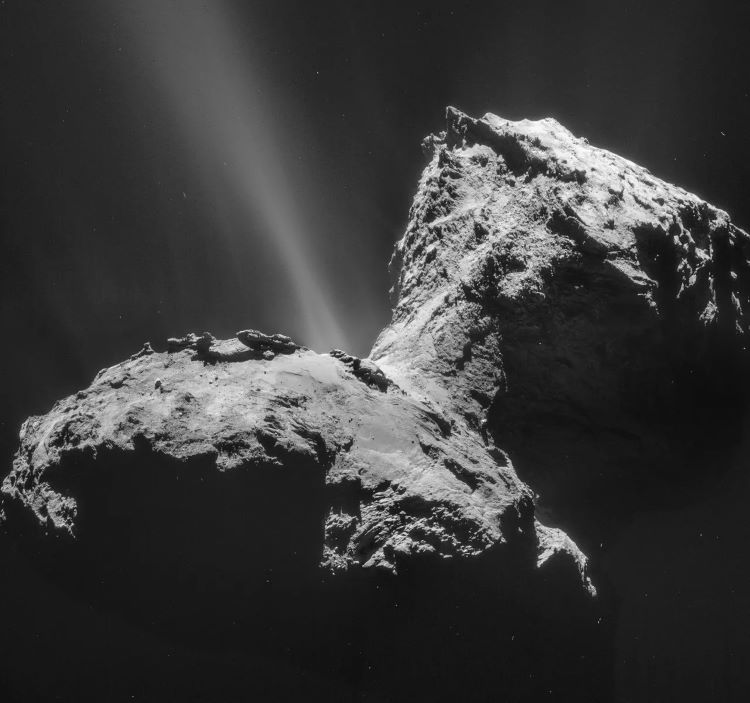
Universe Today has explored the importance of studying impact craters, planetary surfaces, exoplanets, astrobiology, and solar physics, and what this myriad of scientific disciplines can teach scientists and the public regarding the search for life beyond Earth. Here, we will explore some of the most awe-inspiring spectacles within our solar system known as comets, including why researchers study comets, the benefits and challenges, what comets can teach us about finding life beyond Earth, and how upcoming students can pursue studying comets. So, why is it so important to study comets?
Continue reading “Comets: Why study them? What can they teach us about finding life beyond Earth?”Electrodes in Spacesuits Could Protect Astronauts from Harmful Dust on Mars
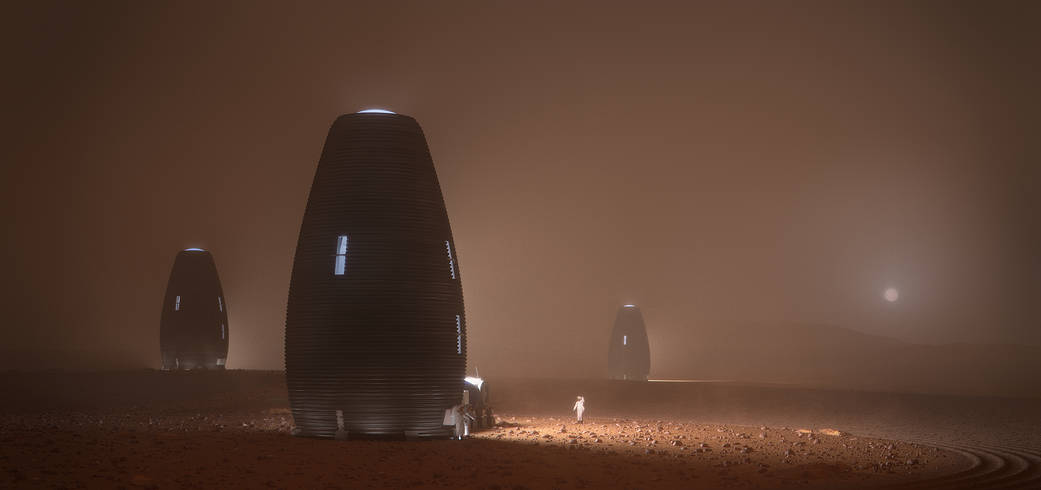
To quote NASA associate administrator Jim Reuter, sending crewed missions to Mars by 2040 is an “audacious goal.” The challenges include the distance involved, which can take up to six months to traverse using conventional propulsion methods. Then there’s the hazard posed by radiation, which includes increased exposure to solar particles, flares, and galactic cosmic rays (GCRs). And then there’s the time the crews will spend in microgravity during transits, which can take a serious toll on human health, physiology, and psychology.
But what about the challenges of living and working on Mars for several months at a time? While elevated radiation and lower gravity are a concern, so is Martian regolith. Like lunar regolith, dust on Mars will adhere to astronauts’ spacesuits and inflict wear on their equipment. However, it also contains harmful particles that must be removed to prevent contaminating habitats. In a recent study, a team of aerospace engineers tested a new electrostatic system for removing Martian regolith from spacesuits that could potentially remove harmful dust with up to 98% efficiency.
Continue reading “Electrodes in Spacesuits Could Protect Astronauts from Harmful Dust on Mars”Odysseus Moon Lander Sends More Pictures — and We Know Where It Is
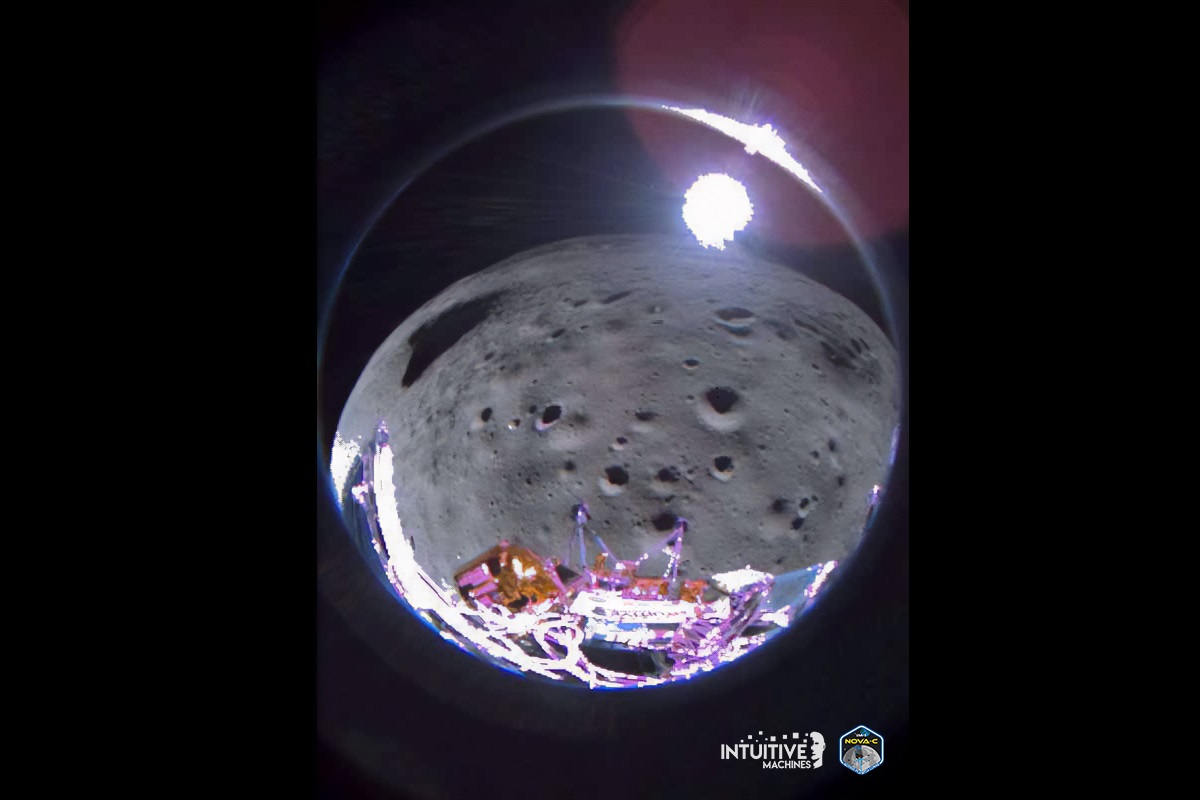
Four days after Intuitive Machines’ Odysseus lander made an off-kilter touchdown on the moon, the mission team is releasing snapshots that were taken during its descent.
The ultra-wide-angle images confirm that the lander is continuing to communicate with flight controllers, even though it’s lying in an awkward angle that limits how much data its antennas can transmit.
Meanwhile, images from NASA’s Lunar Reconnaissance Orbiter have identified Odysseus’ landing spot, within a mile (1.5 kilometers) of its intended target near a crater called Malapert A in the moon’s south polar region. The bad news is that the solar-powered lander may have to go dark sooner than anticipated.
Continue reading “Odysseus Moon Lander Sends More Pictures — and We Know Where It Is”Odysseus Moon Lander Is Tipped Over But Still Sending Data
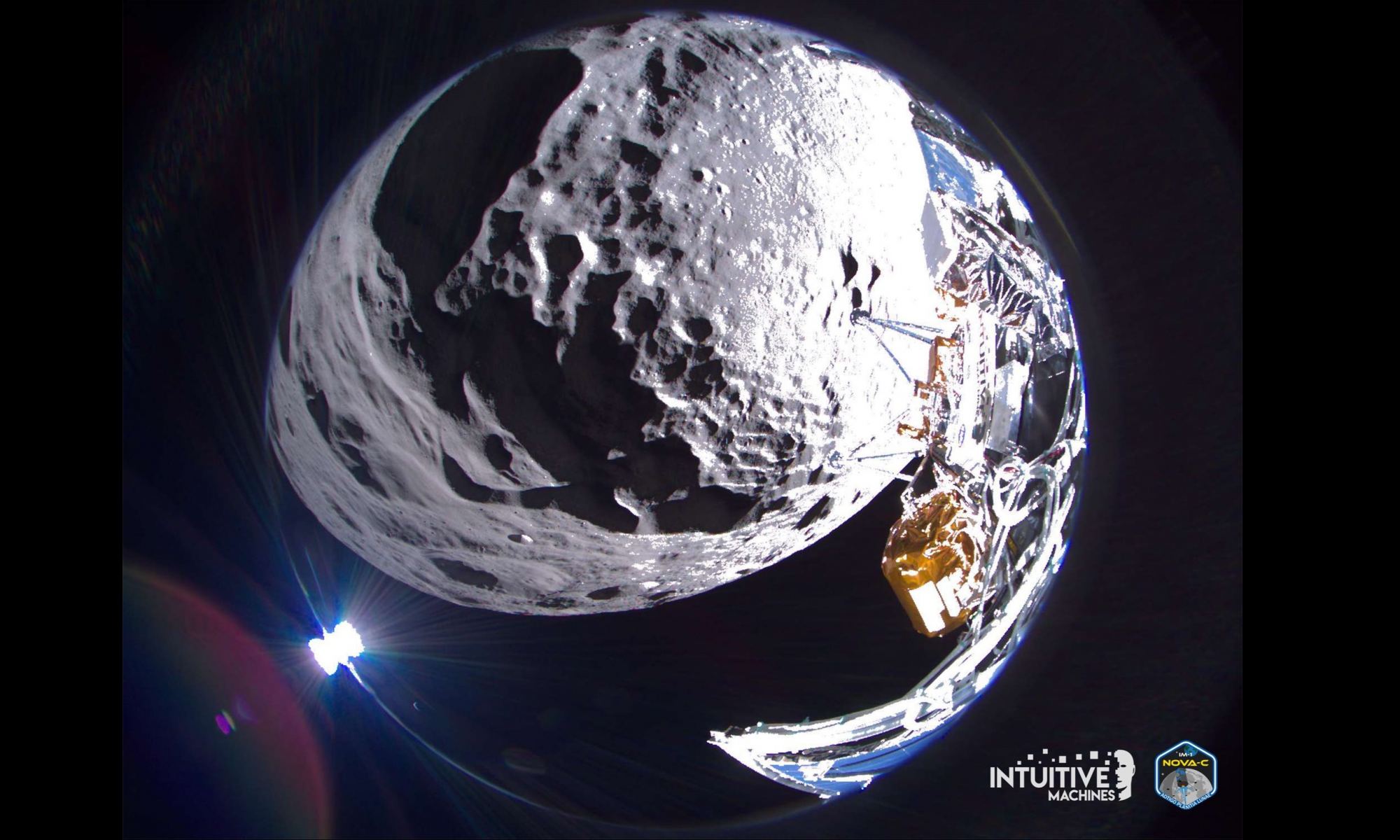
The bad news is that Intuitive Machines’ Odysseus lander is tipped on its side after getting tripped up during its touchdown near the south pole of the moon. The good news? The plucky robotic spacecraft is nevertheless able to send back data.
Mission managers at the Houston-based company and at NASA, which is paying $118 million to support Odysseus’ space odyssey, are working on ways to maximize the scientific payback over the next nine or 10 days. “The vehicle is stable, near or at our intended landing site,” Intuitive Machines CEO Steve Altemus said today during a post-landing briefing at NASA’s Johnson Space Center. “We do have communications with the lander … so that’s phenomenal to begin with.”
Just by surviving the descent a day earlier, Odysseus made it into the history books as the first commercial lander to arrive safely on the moon — and the first U.S.-built spacecraft to do so since the Apollo 17 mission in 1972.
Continue reading “Odysseus Moon Lander Is Tipped Over But Still Sending Data”Intuitive Machines’ Odysseus Lander Sends Faint Signal From the Moon
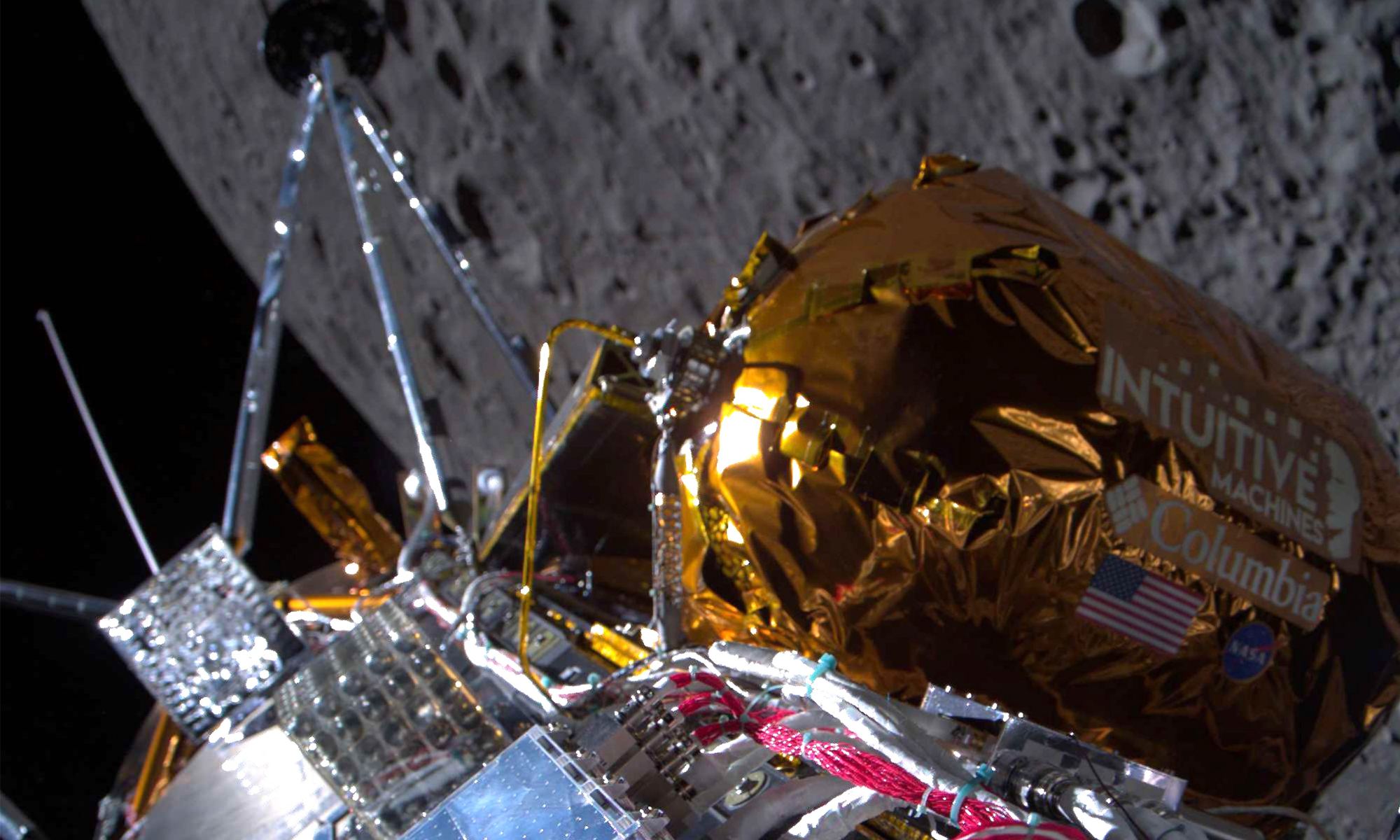
Intuitive Machines‘ Odysseus lander made space history today — becoming the first commercial spacecraft to survive a descent to the moon, and the first U.S.-built spacecraft to do so since the Apollo 17 mission in 1972. But it wasn’t a trouble-free landing.
Ground controllers had a hard time establishing contact with the robotic lander just after the scheduled touchdown time of 6:23 p.m. ET (2323 UTC). Several minutes passed, and then Intuitive Machines mission director Tim Crain reported that there was a faint signal coming from Odysseus’ high-gain antenna.
“We’re not dead yet,” he said.
Continue reading “Intuitive Machines’ Odysseus Lander Sends Faint Signal From the Moon”Odysseus Moon Lander Sends Back Selfies With Earth in the Picture
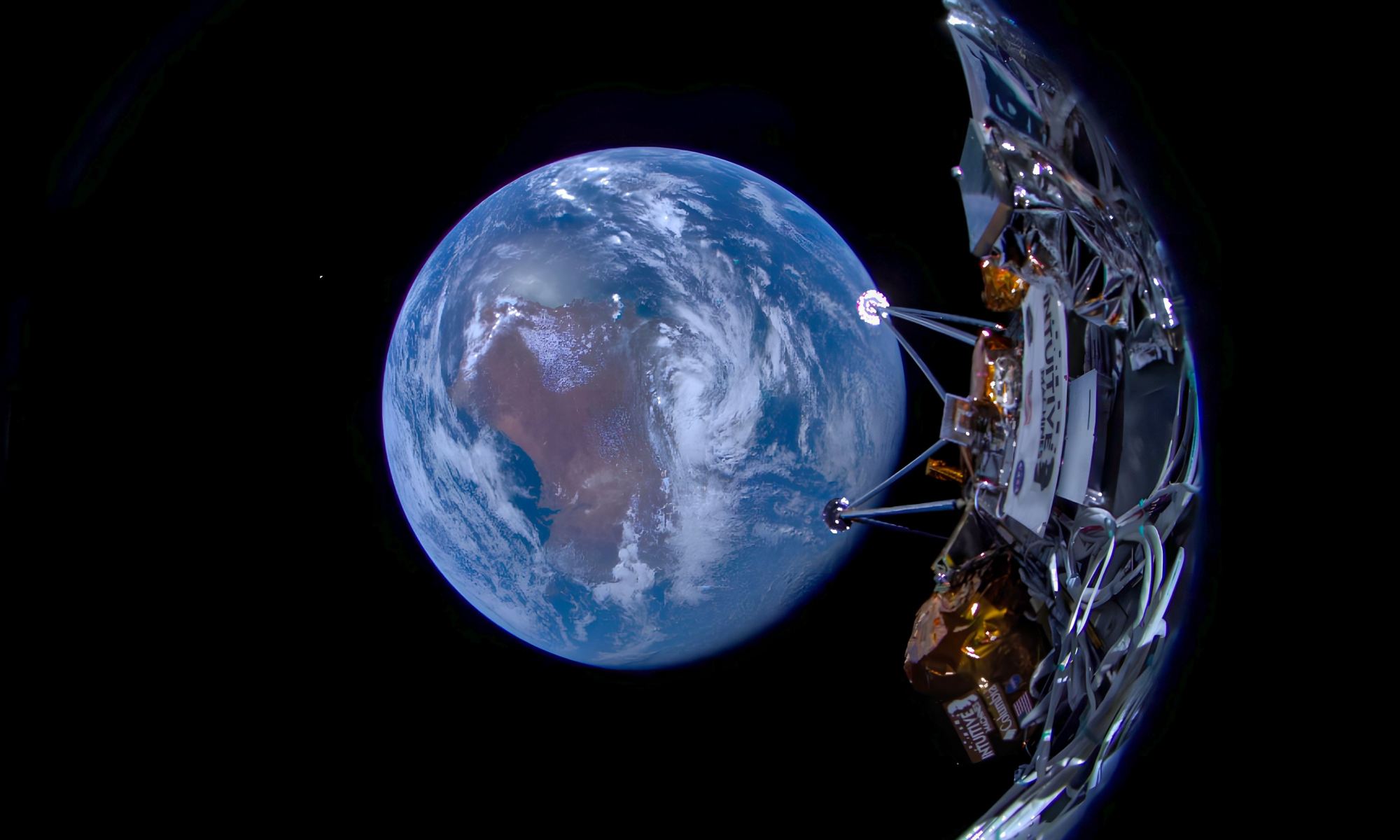
Intuitive Machines’ Odysseus lander has beamed back a series of snapshots that were captured as it headed out from the Earth toward the moon, and one of the pictures features Australia front and center. The shots also show the second stage of the SpaceX Falcon 9 rocket that launched the spacecraft, floating away as Odysseus pushed onward.
Continue reading “Odysseus Moon Lander Sends Back Selfies With Earth in the Picture”Can the Gaia Hypothesis Be Tested in the Lab?

During the 1970s, inventor/environmentalist James Lovelock and evolutionary biologist Lynn Margulis proposed the Gaia Hypothesis. This theory posits that Earth is a single, self-regulating system where the atmosphere, hydrosphere, all life, and their inorganic surroundings work together to maintain the conditions for life on the planet. This theory was largely inspired by Lovelock’s work with NASA during the 1960s, where the skilled inventor designed instruments for modeling the climate of Mars and other planets in the Solar System.
According to this theory, planets like Earth would slowly grow warmer and their oceans more acidic without a biosphere that regulates temperature and ensures climate stability. While the theory was readily accepted among environmentalists and climatologists, many in the scientific community have remained skeptical since it was proposed. Until now, it has been impossible to test this theory because it involves forces that work on a planetary scale. But in a recent paper, a team of Spanish scientists proposed an experimental system incorporating synthetic biology that could test the theory on a small scale.
Continue reading “Can the Gaia Hypothesis Be Tested in the Lab?”NASA is Done Setting Fires Inside its Doomed Cargo Spacecraft
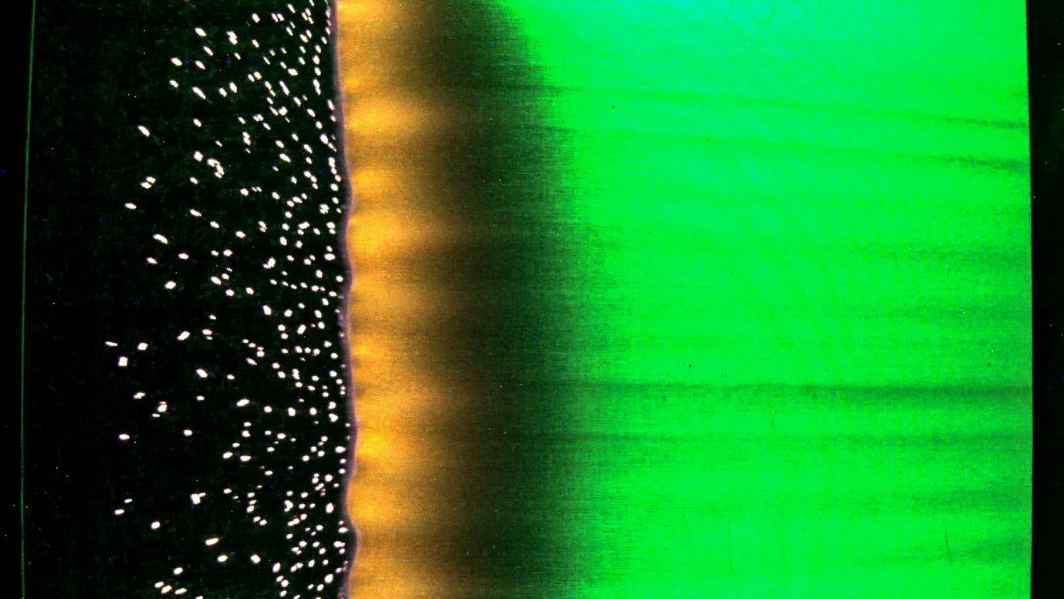
Fire on a spacecraft can be catastrophic. It can spread quickly in a confined space, and for trapped astronauts, there may be no escape. It’s fading in time now, but Apollo 1, which was to be the first crewed Apollo mission, never got off the ground because of a fire that killed the crew. There’ve been other dangerous spacecraft fires too, like the one onboard the Russian Mir space station in 1997.
In an effort to understand how fire behaves in spacecraft, NASA began its Saffire (Spacecraft Fire Safety Experiment) in 2016. Saffire was an eight-year, six-mission effort to study how fire behaves in space. The final Saffire test was completed on January 9th.
Continue reading “NASA is Done Setting Fires Inside its Doomed Cargo Spacecraft”Ground-Based Lasers Could Accelerate Spacecraft to Other Stars

The future of space exploration includes some rather ambitious plans to send missions farther from Earth than ever before. Beyond the current proposals for building infrastructure in cis-lunar space and sending regular crewed missions to the Moon and Mars, there are also plans to send robotic missions to the outer Solar System, to the focal length of our Sun’s gravitational lens, and even to the nearest stars to explore exoplanets. Accomplishing these goals requires next-generation propulsion that can enable high thrust and consistent acceleration.
Focused arrays of lasers – or directed energy (DE) – and lightsails are a means that is being investigated extensively – such as Breakthrough Starshot and Swarming Proxima Centauri. Beyond these proposals, a team from McGill University in Montreal has proposed a new type of directed energy propulsion system for exploring the Solar System. In a recent paper, the team shared the early results of their Laser-Thermal Propulsion (LTP) thruster facility, which suggests that the technology has the potential to provide both high thrust and specific impulse for interstellar missions.
Continue reading “Ground-Based Lasers Could Accelerate Spacecraft to Other Stars”
